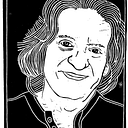Member-only story
Hitler’s Degenerate Art Exhibit
Adolf Hitler believed the only true art was that which imitated the natural world. As a young artist he painted sentimental renderings of mountains, landscapes and Viennese buildings. He claimed to be inspired by Greco-Roman Classicism but his paintings were more like elaborate postcards. He twice submitted his portfolio to the Vienna Academy of Visual Arts. Both times he was rejected for unsatisfactory drawing skills. He vowed to make the art world pay for their insolence.
When Hitler came to power in 1933, he considered art an important tool to purify the nation. The purpose of art was to shape public attitudes through promoting the virtues of German life: “Kinder, Küche, Kirche” (family, home and church). In a 1935 Party Day speech Hitler said, “We shall discover and encourage artists who are able to impress upon the German people the cultural stamp of the German race.”
Modern art had no place in Hitler’s Germany.
By 1937, Nazi policy incorporated the concept of degeneracy. Any artwork deemed subversive by Hitler or the National Socialist Party was classified under the label Entartete Kunst meaning Degenerate Art. Propaganda Minister Joseph Goebbels established the Reich Chamber of Visual Art. This committee confiscated artworks from museums and private collections throughout the country. They seized more than 16,000 works including…
